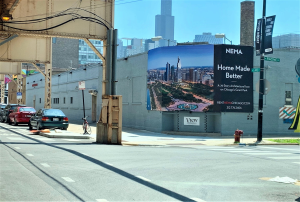Types of Luxury Consumers: Beyond Income and Demographics
Luxury marketers have long segmented audiences by income, age, or geography. But in today’s marketplace, one often-overlooked factor has become essential: cultural capital.
Cultural capital refers to the knowledge, tastes, skills, and social cues that allow individuals to navigate elite environments. In the luxury world, this means much more than financial status. It’s about how consumers interpret value, appreciate design, and signal identity through the brands they choose.
This blog explores how cultural capital reshapes traditional understandings of the different types of luxury consumers and provides new pathways for smarter, more effective marketing strategies.
Types of Luxury Consumers and the Three Forms of Cultural Capital
Sociologist Pierre Bourdieu defined three types of cultural capital that influence consumption behavior:
Embodied Capital
This includes taste, education, language, and aesthetic preferences. For luxury consumers, it determines whether they favor minimalist design or maximalist heritage, quiet luxury or logo-heavy statements.
Objectified Capital
This relates to cultural goods such as books, art, and fashion. A consumer’s ability to interpret and value luxury goods is filtered through this lens.
Institutionalized Capital
This includes formal recognition—degrees, accolades, or elite memberships. For brands, it signals alignment with consumers who view luxury through a lens of prestige and legitimacy.
Understanding these layers helps decode how different types of luxury consumers make purchasing decisions.
Cultural Capital and the Emergence of New Luxury Consumer Profiles
Let’s examine how cultural capital divides and refines our understanding of luxury consumer profiles:
The Connoisseur
These consumers value craftsmanship, heritage, and subtlety. They are fluent in the codes of luxury and seek validation not through recognition, but through personal alignment with brand narratives. Embodied cultural capital is their guiding force.
The Collector
Driven by objectified capital, collectors prize limited editions, collaborations, and exclusive drops. Their knowledge gives them cultural status in niche circles, whether it’s vintage watches or rare designer collaborations.
The Curator
This consumer uses luxury to express aesthetic vision. They create unique combinations of high and low, new and vintage, mainstream and underground. Their cultural capital is dynamic and performative, often broadcast through digital channels.
The Aspirant with Emerging Cultural Fluency
This group may have high economic capital but lower cultural capital. They tend to gravitate toward overt branding and are building their luxury vocabulary through influencers, media, and experience.
These refined personas challenge the idea that all wealthy buyers behave the same way.
Marketing Implications: Speaking to the Right Cultural Signals
Luxury brands must go beyond showcasing wealth and instead tap into cultural fluency. Here’s how:
Narrative-Driven Campaigns
Use storytelling that reflects knowledge, heritage, and artistic influence. Campaigns should reference architecture, literature, design history, or other domains that resonate with culturally savvy consumers.
In-Hand and Experiential Touchpoints
This is where Adzze’s strategy becomes highly relevant. Placing luxury messages on curated in-hand media—like coffee sleeves in high-end cafes or bar coasters in premium venues—targets audiences rich in cultural capital during moments of leisure and reflection.
Partnerships with Cultural Institutions
Collaborate with museums, universities, or creative thinkers to validate your brand’s intellectual presence. These partnerships speak directly to institutionalized cultural capital.
Cultural Capital in Digital Behavior
The digital footprint of luxury consumers varies based on their cultural capital:
Connoisseurs seek long-form content, interviews with designers, and brand documentaries.
Collectors monitor niche forums, Discord groups, or insider resale platforms.
Curators share content on Pinterest, Instagram, and Substack—using luxury items to express aesthetic identity.
Aspirants engage heavily with influencer content and unboxing videos.
Brands must design digital strategies that reflect these content preferences.
Different Types of Luxury Consumers React Differently to Status Cues
Cultural capital also defines how consumers perceive status:
High cultural capital consumers prefer understated, insider cues (e.g., Loro Piana, The Row)
Low cultural capital consumers often prefer loud, logo-centric brands (e.g., Balenciaga, Supreme)
Marketing strategies should adapt based on whether they are reinforcing exclusivity or offering aspirational entry points.
From Visibility to Discretion: The New Luxury Code
Cultural capital is driving a shift in how luxury is performed. Discretion is the new display.
Consumers with strong cultural capital gravitate toward:
Muted design with rich textures
Authenticity over virality
Purpose over price tag
To appeal to these segments, brands must de-emphasize trend-chasing and highlight their depth, values, and long-term vision.
How Adzze Fits This Shift
Adzze’s in-hand advertising solutions align perfectly with consumers who are increasingly turning away from traditional OOH advertising. Placing your brand in high-touch, thoughtful spaces—from boutique hotel lobbies to curated in-home media—provides relevance without intrusion.
Instead of a billboard, consider a branded artisan coffee sleeve with a QR code that leads to a short film or exclusive editorial. This is luxury advertising for the culturally fluent.
Final Thoughts
The different types of luxury consumers are no longer defined solely by wealth. Cultural capital offers a richer, more accurate lens for understanding what motivates premium buyers.
By segmenting audiences based on their fluency in art, design, and storytelling, brands can elevate their marketing strategies to build not just customers, but long-term brand evangelists.
For marketers ready to deepen their understanding of modern luxury, embracing cultural capital is no longer optional—it’s essential.






